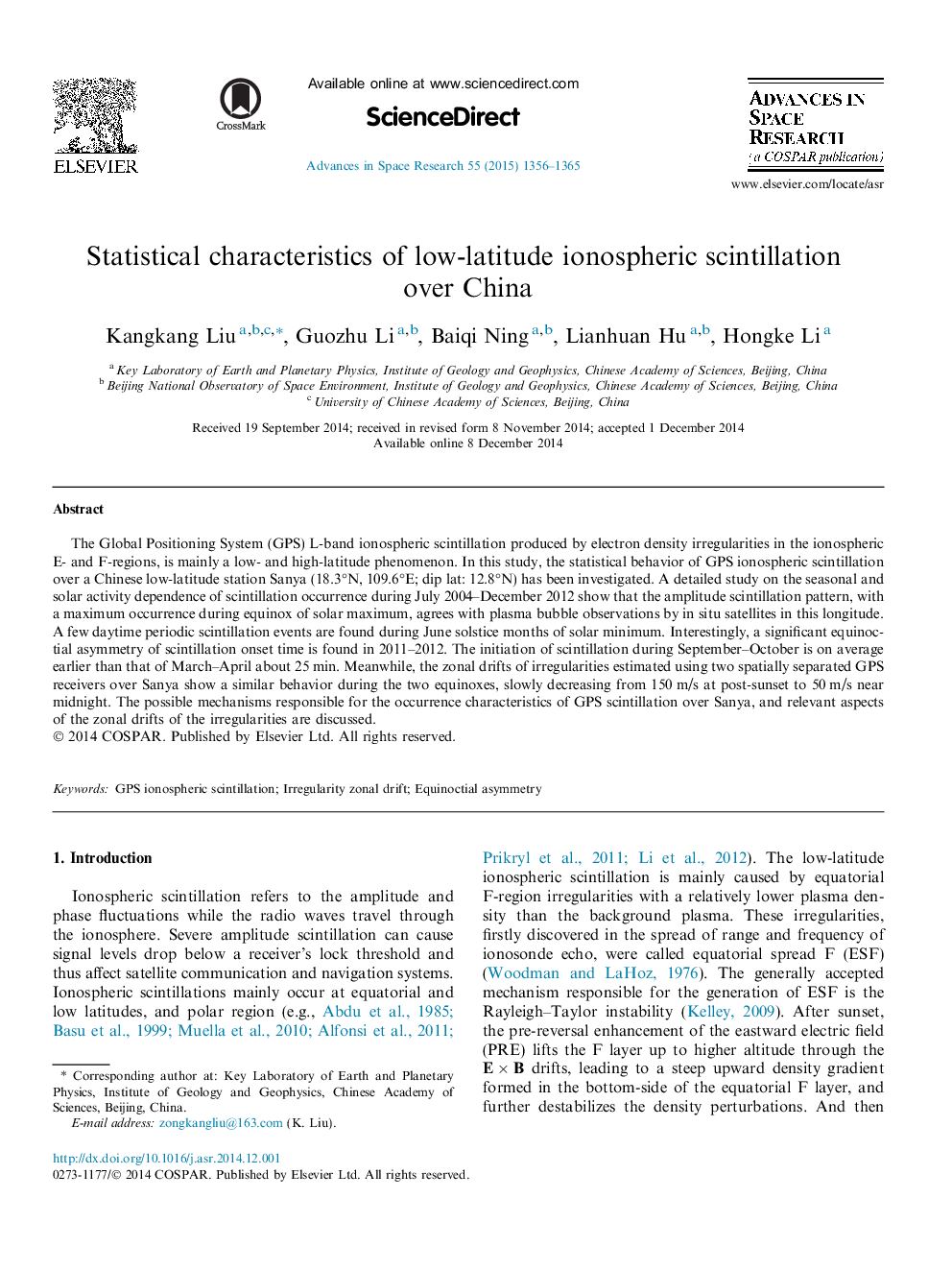| Article ID | Journal | Published Year | Pages | File Type |
|---|---|---|---|---|
| 10694312 | Advances in Space Research | 2015 | 10 Pages |
Abstract
The Global Positioning System (GPS) L-band ionospheric scintillation produced by electron density irregularities in the ionospheric E- and F-regions, is mainly a low- and high-latitude phenomenon. In this study, the statistical behavior of GPS ionospheric scintillation over a Chinese low-latitude station Sanya (18.3°N, 109.6°E; dip lat: 12.8°N) has been investigated. A detailed study on the seasonal and solar activity dependence of scintillation occurrence during July 2004-December 2012 show that the amplitude scintillation pattern, with a maximum occurrence during equinox of solar maximum, agrees with plasma bubble observations by in situ satellites in this longitude. A few daytime periodic scintillation events are found during June solstice months of solar minimum. Interestingly, a significant equinoctial asymmetry of scintillation onset time is found in 2011-2012. The initiation of scintillation during September-October is on average earlier than that of March-April about 25 min. Meanwhile, the zonal drifts of irregularities estimated using two spatially separated GPS receivers over Sanya show a similar behavior during the two equinoxes, slowly decreasing from 150 m/s at post-sunset to 50 m/s near midnight. The possible mechanisms responsible for the occurrence characteristics of GPS scintillation over Sanya, and relevant aspects of the zonal drifts of the irregularities are discussed.
Keywords
Related Topics
Physical Sciences and Engineering
Earth and Planetary Sciences
Space and Planetary Science
Authors
Kangkang Liu, Guozhu Li, Baiqi Ning, Lianhuan Hu, Hongke Li,
